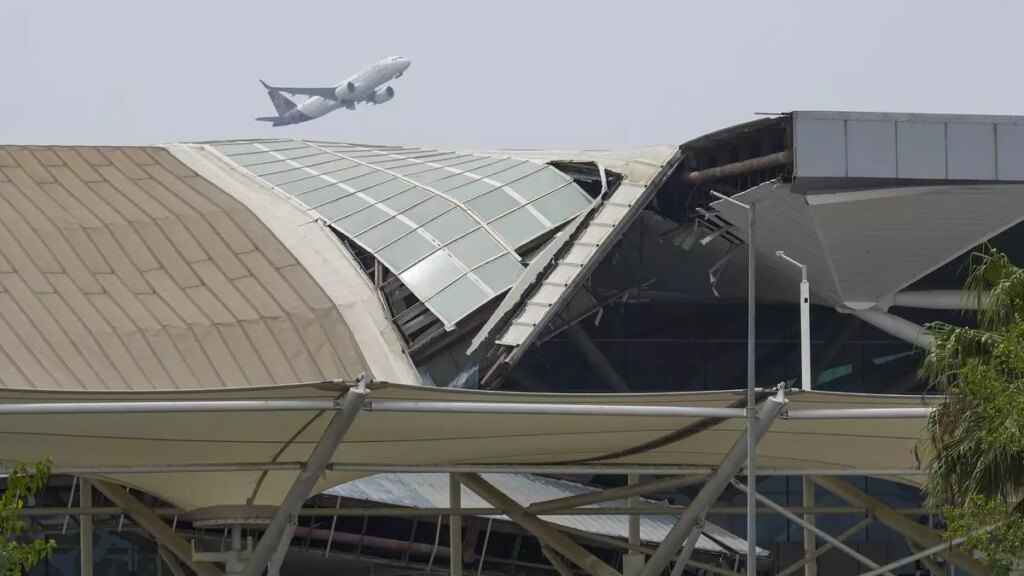Editorial. Airport canopy accidents highlight regulatory gaps

Amidst torrential rain, airport canopies came down crashing recently in Delhi, Rajkot, Lucknow and Jabalpur. The accidents give rise to two lines of enquiry. First, it raises questions about the design of these canopies – why they were not equipped to withstand a spell of hard rain, even if that spell was exceptionally severe. Delhi is believed to have received a third of its entire monsoon rain last Friday. But extreme weather events are no longer rare, and it is surprising that today’s buildings cannot account for this factor.
While details are not known, it is possible that the rapidly accumulating water on the canopy had no outlets, which brought the canopy down. The mishaps betray a technical shoddiness and disregard for upkeep (if, say, the outlets on the canopy were not working) that are disconcerting for a country pushing infrastructure growth. Second, it appears that there are no clear rules or even laws in place to establish accountability. In the present context, the private consortium or main operator should be held to account – the airports concerned are run by a consortium which has entered into an Operation, Management and Development Agreement (OMDA) with the Airports Authority of India (the two entities owning the airport in a 74:26 ratio). However, the scope of the OMDA in this respect is not known.
The consortium sub-contracts the construction of various parts of airports to different players. A perfunctory reading of the contract law tells us that the principal contractor or the consortium remains primarily responsible. But the nature of the contracts between the consortium and the sub-contractors is not known; for instance, it is possible that the latter has undertaken to be responsible for maintenance. In that case, the legal position is nebulous. The agent could be held responsible if some lapses in terms of disclosures are established. A July 2022 Supreme Court ruling on a case between Delhi International Airport Limited and AAI delves into aspects of OMDA that pertain to fees and revenue sharing, but does not address this grey area. It only says that the Airports Economic Regulatory Authority of India (AERA) is the regulator concerned. What is astonishing is the lack of clarity on operational responsibilities, despite the fact that airport liberalisation came into being as far back as in 2008, with the passage of the AERA Act. A background paper on the “regulatory philosophy” of the Act issued in June 2010 is focused on upkeep of ‘air navigation’ rather than ground handling services.
It is worth asking whether users of airports, who pay passenger development fees and user development fees, can lay charge to being shortchanged in a mishap. As regards the revenue sharing model between the consortium and AAI, it is worth looking at how it is working in practice. India’s infrastructure regulation and operations have too many grey areas. Addressing these issues should be a policy priority.








